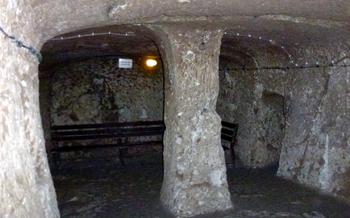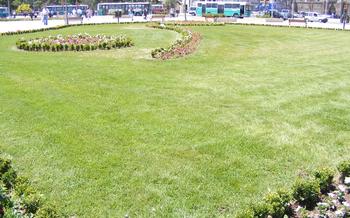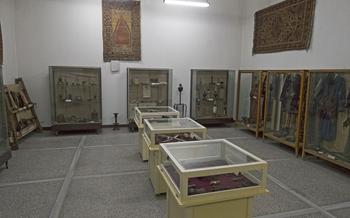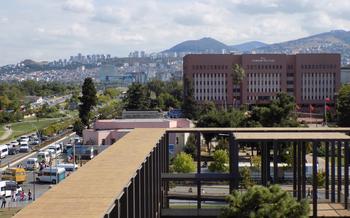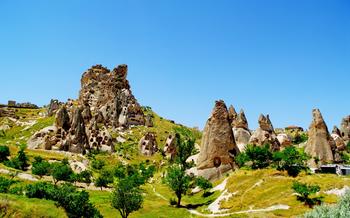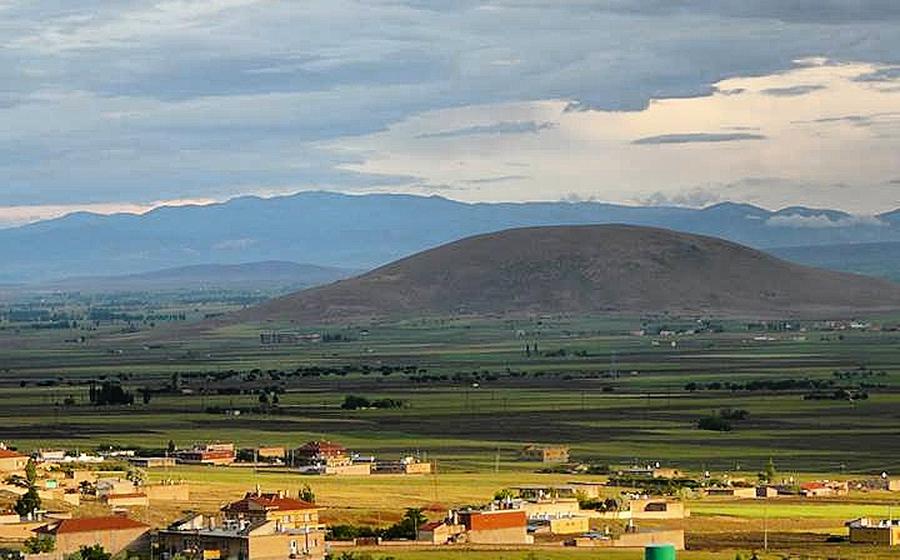
Derinkuyu & Kaymaklı Underground Cities Connection
- A Journey to the Depths: Derinkuyu & Kaymaklı Underground Cities
- Delving into Derinkuyu: The Deepest Underground City
- Exploring Kaymaklı: A Thriving Underground Community
- The Cappadocia Region: A Land of Wonders
- Practical Information for Visitors
- Uncovering the History of the Underground Cities
- Engineering Marvels of the Underground World
- Life in the Underground Cities: A Glimpse into the Past
- The Role of the Underground Cities in Regional History
- The Legacy of the Underground Cities: Preserving a Unique Heritage
- The Enchanting Landscapes of Cappadocia: A Visual Feast
- Exploring Beyond the Underground Cities: Cappadocia's Treasures
A Journey to the Depths: Derinkuyu & Kaymaklı Underground Cities
In the heart of Cappadocia, Turkey, lies a hidden world beneath the surface—the Derinkuyu and Kaymaklı underground cities. These remarkable subterranean structures, dating back to ancient times, offer a glimpse into a fascinating chapter of human history. As you descend into these labyrinthine cities, you'll embark on a journey that unveils the rich history, architectural marvels, cultural heritage, and modern-day relevance of these enigmatic underground wonders.
The Cappadocia region, with its unique geological formations and historical significance, provides the perfect backdrop for these extraordinary cities. Carved into soft volcanic rock, these underground dwellings served as safe havens for local communities during times of conflict and instability. The intricate network of tunnels, chambers, and ventilation systems showcase the ingenuity and engineering prowess of ancient civilizations.
Discover the stories and traditions of the people who once called these underground cities home. Imagine their daily lives, their struggles, and their triumphs as you explore the well-preserved living quarters, communal areas, and religious spaces. Unravel the secrets of their defense mechanisms, designed to protect the cities from invaders.
In the modern context, these underground cities serve as a reminder of the resilience and adaptability of human communities. They offer valuable insights into the history and culture of the region, while also highlighting the importance of preserving and protecting our cultural heritage.
Delving into Derinkuyu: The Deepest Underground City
Derinkuyu, the deepest and most extensive of Cappadocia's underground cities, is a labyrinthine marvel that delves an astonishing 85 meters below the earth's surface. Its intricate network of tunnels and chambers, spanning a staggering 18 levels, provides a glimpse into the ingenuity and resilience of civilizations past.
Discover the multi-level living spaces, each meticulously designed for a specific purpose. From sleeping quarters and kitchens to stables and storage areas, the city's layout reflects the organized and self-sufficient lifestyle of its inhabitants.
Unravel the secrets of the ingenious ventilation systems that circulated fresh air throughout the city, ensuring a habitable environment even in the deepest recesses. Explore the water supply mechanisms, showcasing the sophisticated methods used to collect, store, and distribute water within the underground metropolis.
Immerse yourself in the stories and legends that surround Derinkuyu, a city shrouded in mystery and intrigue. Imagine the lives of the people who sought refuge within these subterranean depths, creating a hidden world beneath the Cappadocian plains.
Exploring Kaymaklı: A Thriving Underground Community
Descending into Kaymaklı is like stepping into a hidden world where a vibrant community once thrived underground. The city's layout is meticulously planned, with residential quarters, communal areas, religious spaces, and defense mechanisms all carefully integrated.
In the residential quarters, visitors can imagine the daily lives of the city's inhabitants, who made their homes in small, cozy chambers carved into the rock. Communal areas, such as kitchens and dining halls, hint at the strong sense of community and shared experiences.
Religious spaces, including hidden churches and prayer rooms, provide a glimpse into the spiritual beliefs of the city's residents. These spaces often feature intricate artwork and religious symbols, adding a sacred dimension to the underground environment.
Kaymaklı's elaborate defense mechanisms showcase the city's resilience and preparedness against potential threats. Narrow tunnels, heavy doors, and secret passages were designed to protect the inhabitants from invaders. These features demonstrate the strategic thinking and engineering prowess of the city's builders.
Exploring Kaymaklı is a journey through time, offering a glimpse into the lives of a resilient community that thrived beneath the surface of the earth. The city's well-preserved architecture and intricate details provide a tangible connection to the past, inviting visitors to imagine the lives of those who sought refuge and community in this remarkable underground world.
The Cappadocia Region: A Land of Wonders
The Cappadocia region, where Derinkuyu and Kaymaklı are situated, is a captivating land brimming with natural wonders and historical treasures. Its awe-inspiring landscape, shaped by volcanic eruptions and erosion over millennia, features unique geological formations that have become iconic symbols of the region.
Cappadocia's rich history dates back to ancient times, with various civilizations leaving their mark on this diverse land. From the Hittites to the Romans, Byzantines, and Ottomans, each era has contributed to the region's cultural tapestry. The region's history is intertwined with the story of the underground cities, as they played a crucial role in providing refuge and sustenance to the local population during times of conflict and invasion.
Cappadocia's cultural diversity is reflected in its architecture, cuisine, and traditions. Visitors can explore ancient cave dwellings, marvel at the intricate designs of Seljuk mosques, and savor the flavors of traditional Turkish dishes. The region is also home to several UNESCO World Heritage sites, including Göreme National Park, with its stunning rock-cut churches and monasteries.
Beyond the underground cities, Cappadocia offers a myriad of attractions for visitors. Hot air balloon rides at sunrise provide a breathtaking panorama of the fairy chimneys and valleys. Trekking through the Ihlara Valley, with its lush vegetation and cascading waterfalls, offers a tranquil escape into nature. Exploring the Uchisar Castle, perched atop a volcanic rock, unveils panoramic views of the region.
Cappadocia's unique blend of natural wonders, history, and cultural heritage makes it a captivating destination for travelers seeking an enriching and awe-inspiring experience.
Practical Information for Visitors
Location:
Derinkuyu Underground City: Located approximately 30 kilometers southwest of Nevşehir, Derinkuyu is easily accessible by car or public transportation. Its GPS coordinates are 38°22'0"N 34°44'30.0"E.
Kaymaklı Underground City: Situated about 20 kilometers south of Nevşehir, Kaymaklı is conveniently reachable by car or bus. Its GPS coordinates are 38°22'20"N 34°42'30.0"E.
Accessibility:
Both Derinkuyu and Kaymaklı Underground Cities offer good accessibility for visitors. Paved roads lead to the entrances, and ample parking is available nearby. Once inside, visitors can explore the underground tunnels and chambers via well-maintained walkways and staircases.
Guided Tours:
To enhance your understanding of the sites' history and significance, consider joining a guided tour. Knowledgeable guides can provide insights into the construction, engineering, and daily life of the underground cities. Guided tours are available in various languages and can be arranged through local tour operators or at the entrance of the sites.
Hours of Operation:
Derinkuyu Underground City is open to visitors daily from 8 am to 5 pm, while Kaymaklı Underground City is open from 8 am to 7 pm. It's recommended to arrive early to avoid crowds, especially during peak tourist season.
Uncovering the History of the Underground Cities
Early Inhabitants: The Cappadocia region has been inhabited since prehistoric times, and the earliest evidence of underground dwellings dates back to the Hittites, an ancient civilization that ruled the area in the 17th century BCE. These early inhabitants likely used the underground spaces for storage and shelter from harsh weather conditions.
Byzantine Influence: During the Byzantine period (330-1453 CE), the Cappadocia region was a strategic frontier zone, and the underground cities were expanded and fortified to serve as safe havens during times of conflict. The Byzantines constructed elaborate defense systems, including hidden entrances, ventilation shafts, and water cisterns, to ensure the cities' self-sufficiency and security.
Seljuk and Ottoman Periods: The Seljuk Turks, who ruled the region from the 11th to the 13th century, and the Ottomans, who ruled from the 14th to the 20th century, continued to use and modify the underground cities. They adapted the cities to their own needs, constructing mosques, schools, and workshops within the underground chambers.
Modern-day Excavations: In the late 19th and early 20th centuries, European explorers and archaeologists began to investigate the underground cities of Cappadocia. These explorations led to the rediscovery of many of the cities and sparked interest in their history and significance. In recent decades, archaeological excavations have uncovered new information about the cities' construction, layout, and daily life.
Engineering Marvels of the Underground World
The construction techniques employed in creating these vast underground cities were nothing short of remarkable. The inhabitants used simple tools and techniques to carve out intricate networks of tunnels and chambers from the soft volcanic rock. The cities were built on multiple levels, with each level serving a specific purpose. The upper levels were typically used for living quarters, while the lower levels were used for storage, workshops, and livestock.
Ventilation systems were essential for maintaining a breathable atmosphere within the cities. The inhabitants constructed ingenious systems of air shafts and chimneys to circulate fresh air throughout the tunnels and chambers. These systems were designed to draw in fresh air from the surface and expel stale air and smoke from cooking fires.
Water management was another key aspect of life in the underground cities. The inhabitants developed sophisticated systems for collecting, storing, and distributing water. They built cisterns to collect rainwater and dug wells to access groundwater. These systems ensured that the city's inhabitants had a reliable source of water, even during prolonged periods of drought.
Defense mechanisms were also an important consideration in the design of the underground cities. The inhabitants constructed elaborate security features to protect themselves from invaders. These features included hidden entrances, narrow passageways, and heavy doors that could be sealed shut. The cities were also built in remote locations, making them difficult to find.
Life in the Underground Cities: A Glimpse into the Past
Stepping into the underground cities of Derinkuyu and Kaymaklı is like embarking on a journey through time, transporting visitors to a hidden world where people once lived and thrived. The daily life of the inhabitants unfolded within these subterranean chambers, revealing a fascinating glimpse into their routines and activities.
Imagine the bustle of daily life in these underground communities, where families went about their daily chores, children played and learned, and artisans practiced their crafts. The inhabitants relied on a self-sufficient economy, engaging in agriculture, animal husbandry, and trade to meet their needs.
Social interactions played a vital role in maintaining the harmony of the community. Gatherings, celebrations, and religious ceremonies took place in designated communal areas, fostering a sense of belonging and resilience among the residents.
The underground cities also served as a hub for cultural expression. Unique customs and beliefs, influenced by the diverse backgrounds of the inhabitants, shaped the cultural tapestry of these hidden communities. Storytelling, music, and art flourished, providing solace and entertainment in the face of adversity.
Life in the underground cities was undoubtedly challenging, but it also fostered a sense of community and resilience. The inhabitants demonstrated remarkable adaptability and resourcefulness in creating a subterranean world that sustained them and protected them from external threats.
The Role of the Underground Cities in Regional History
The underground cities of Derinkuyu and Kaymaklı played a crucial role in the regional history of Cappadocia. They served as safe havens during times of conflict, offering refuge to the local population from invading armies and conquerors. The cities' intricate network of tunnels, chambers, and ventilation systems allowed the inhabitants to remain hidden and protected, making them virtually impenetrable to outsiders.
Furthermore, these underground cities facilitated trade, agriculture, and cultural exchange, contributing to the development of the region. The inhabitants engaged in various economic activities, such as farming, crafting, and trading, utilizing the underground spaces for storage and production. The cities also acted as centers of cultural exchange, where people from different backgrounds and beliefs came together, creating a diverse and vibrant community.
Additionally, there is evidence suggesting that these underground cities may have been part of a larger network of subterranean structures in the region. Some researchers believe that there may be connections between Derinkuyu, Kaymaklı, and other underground cities in Cappadocia, forming a vast and interconnected system of hidden dwellings. These connections could have facilitated communication, trade, and movement between the different communities, further strengthening the region's cultural and economic ties.
The Legacy of the Underground Cities: Preserving a Unique Heritage
The Derinkuyu and Kaymaklı Underground Cities stand as testaments to the ingenuity and resilience of the people who built and inhabited them. Today, these ancient dwellings are recognized as invaluable cultural heritage sites, attracting visitors from around the world.
Preservation efforts are paramount to ensuring the longevity of these underground wonders. Archaeological excavations and restoration projects have been meticulously undertaken to uncover the cities' secrets while preserving their original structures. The Turkish government, in collaboration with international organizations, has implemented strict regulations to protect these sites from damage and deterioration.
The recognition of the underground cities as UNESCO World Heritage Sites in 1985 further underscores their global significance. This prestigious designation not only safeguards their preservation but also promotes their cultural and historical value to a broader audience.
Tourism plays a crucial role in sustaining the legacy of the underground cities. The influx of visitors generates revenue that supports conservation efforts, local businesses, and the overall economy of the region. Responsible tourism practices, such as guided tours and respectful exploration, ensure that the cities are preserved for future generations while providing visitors with an immersive and educational experience.
Through the dedication of preservationists, the support of international organizations, and the responsible engagement of visitors, the Derinkuyu and Kaymaklı Underground Cities will continue to captivate and inspire, ensuring their legacy endures for centuries to come.
The Enchanting Landscapes of Cappadocia: A Visual Feast
Beyond the subterranean wonders of Derinkuyu and Kaymaklı, Cappadocia unveils a mesmerizing tapestry of natural beauty. The region's volcanic origins have sculpted a unique landscape characterized by towering rock formations, known as "fairy chimneys," that rise majestically from the earth, creating a surreal and captivating vista. These distinctive formations, shaped by centuries of erosion, come alive at sunrise and sunset, casting long shadows and painting the sky in vibrant hues. Visitors can embark on scenic hikes, hot air balloon rides, or horseback excursions to fully immerse themselves in the region's enchanting landscapes.
Exploring Beyond the Underground Cities: Cappadocia's Treasures
While the underground cities are undoubtedly the stars of Cappadocia, the region offers a plethora of other captivating attractions that are sure to enthrall visitors. Immerse yourself in the unique geological formations known as fairy chimneys, towering rock structures that have been sculpted by wind and water over millions of years. Take a hot air balloon ride at sunrise to witness the breathtaking panorama of Cappadocia's lunar-like landscape from a bird's-eye view. Discover the ancient rock-cut churches and monasteries that dot the region, adorned with vibrant frescoes that tell stories of faith and devotion. Explore the Ihlara Valley, a hidden paradise with lush vegetation, cascading waterfalls, and Byzantine churches carved into the cliffs. And don't miss the opportunity to visit the vibrant city of Göreme, a UNESCO World Heritage Site, with its charming cave hotels, boutiques, and restaurants. With so much to see and experience, Cappadocia offers an unforgettable journey through history, culture, and natural wonders.


